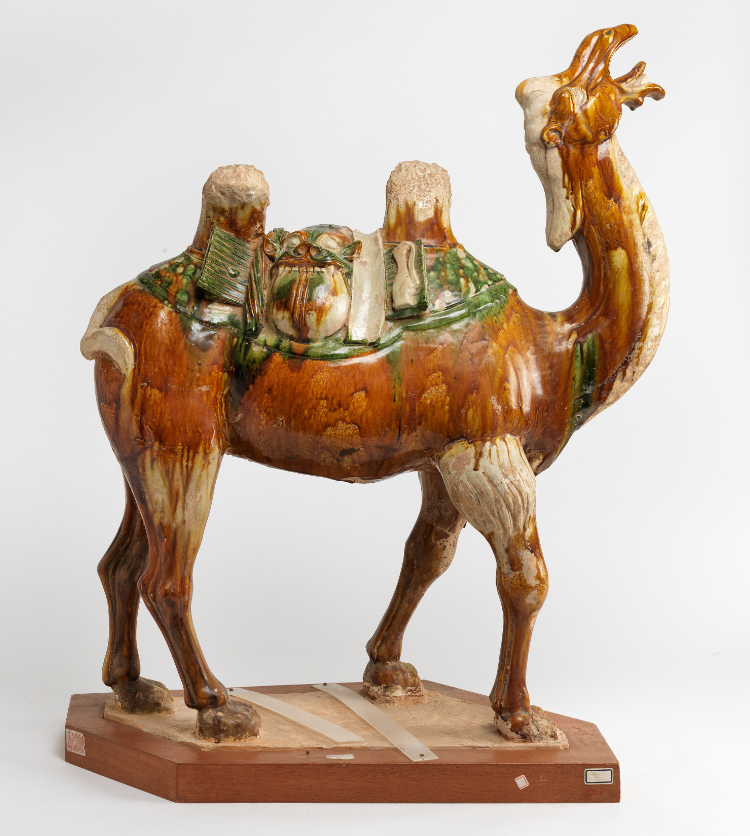Take a look at this camel raising a cry to the sky. It looks majestic and full of life. A leather bag hangs between its two humps, decorated with a delicate motif of an animal face. Water bottles, silk cloth, and other items hang on the animal's two sides. Its center of gravity is projected slightly forward, as if it is about to take its next step.
This tri-color glazed camel is massive and has a complex structure. First, molding was used to form the object and ensure both the correct ratio as well as a lifelike and natural pose. After biscuit firing, the fur on top of the camel's head, two humps, neck, and legs were left with the white color of the clay, while brown, white, and green glaze were applied to the other parts. The low-temperature firing process produces changes in the shade of the glaze as the colors flow and mix. The resulting glaze is colorful and bright while appearing wet and full, an interaction of colors which gives tri-color glazed pottery its imposing and gorgeous artistic charm.
The Silk Road flourished during the Tang dynasty with many caravans coming and going. Merchants used camels—the ships of the desert—to travel while having them carry various goods. The circulation of trade and commerce drove economic growth and cultural exchanges between China and the West. The different poses of Tang dynasty tomb figures offer us clear glimpses of life phenomena shared by Chinese and western culture at the time, of which this tri-color glazed camel is the most representative example. This large, realistic camel figure represents the outstanding craftsmanship of tri-color glazed pottery and is evidence of the thriving trade routes during the Tang dynasty. More than that, it embodies the cosmopolitan spirit of the Tang empire.
